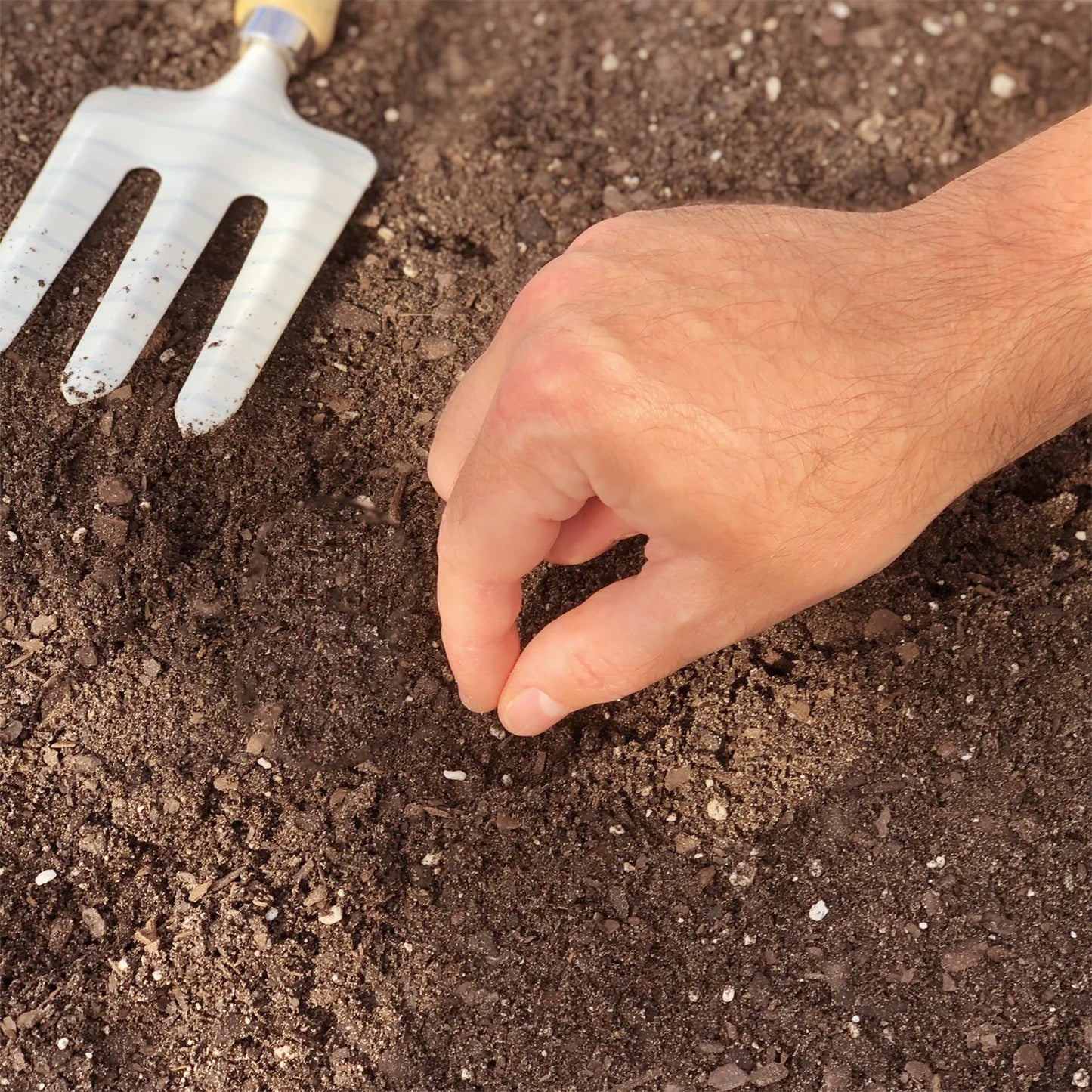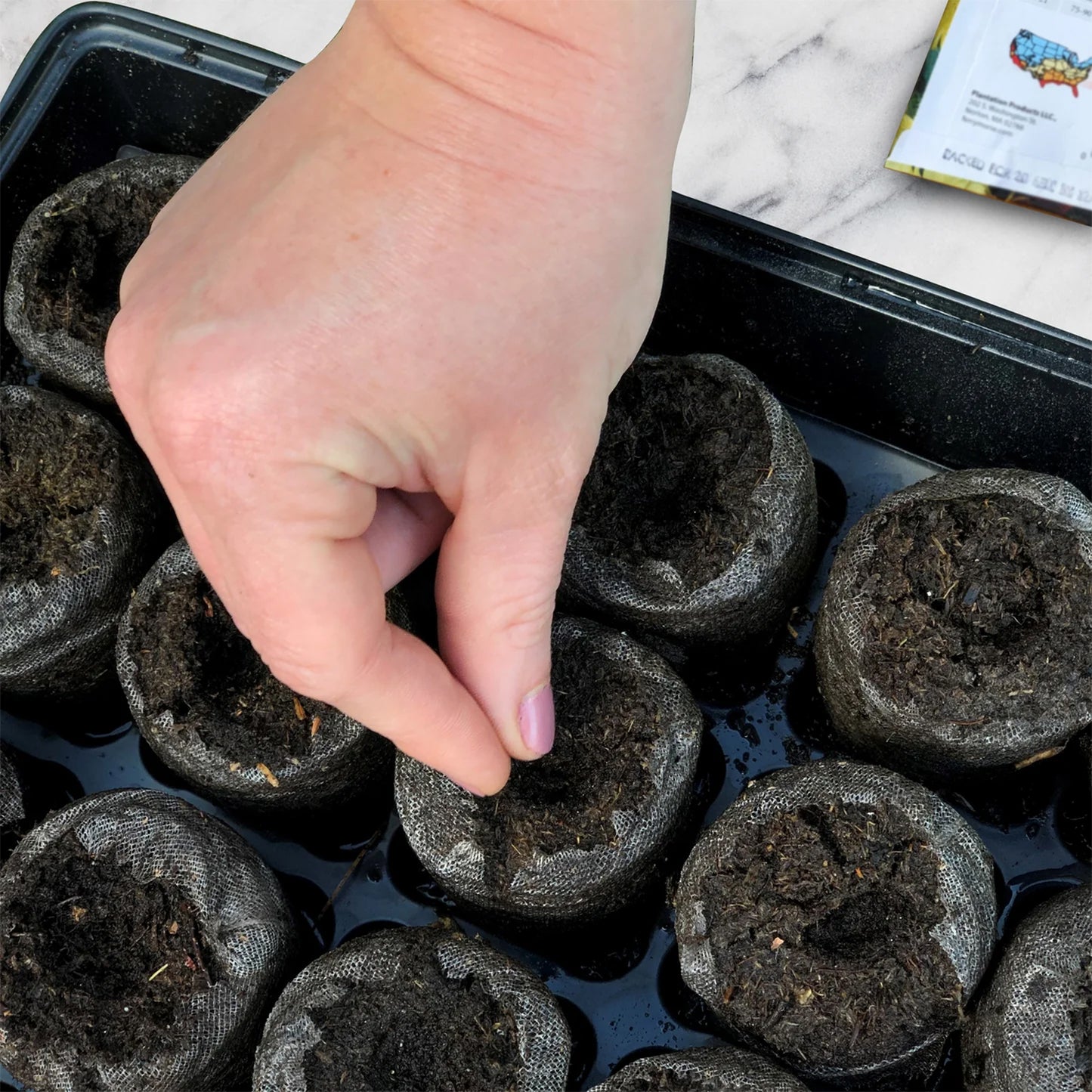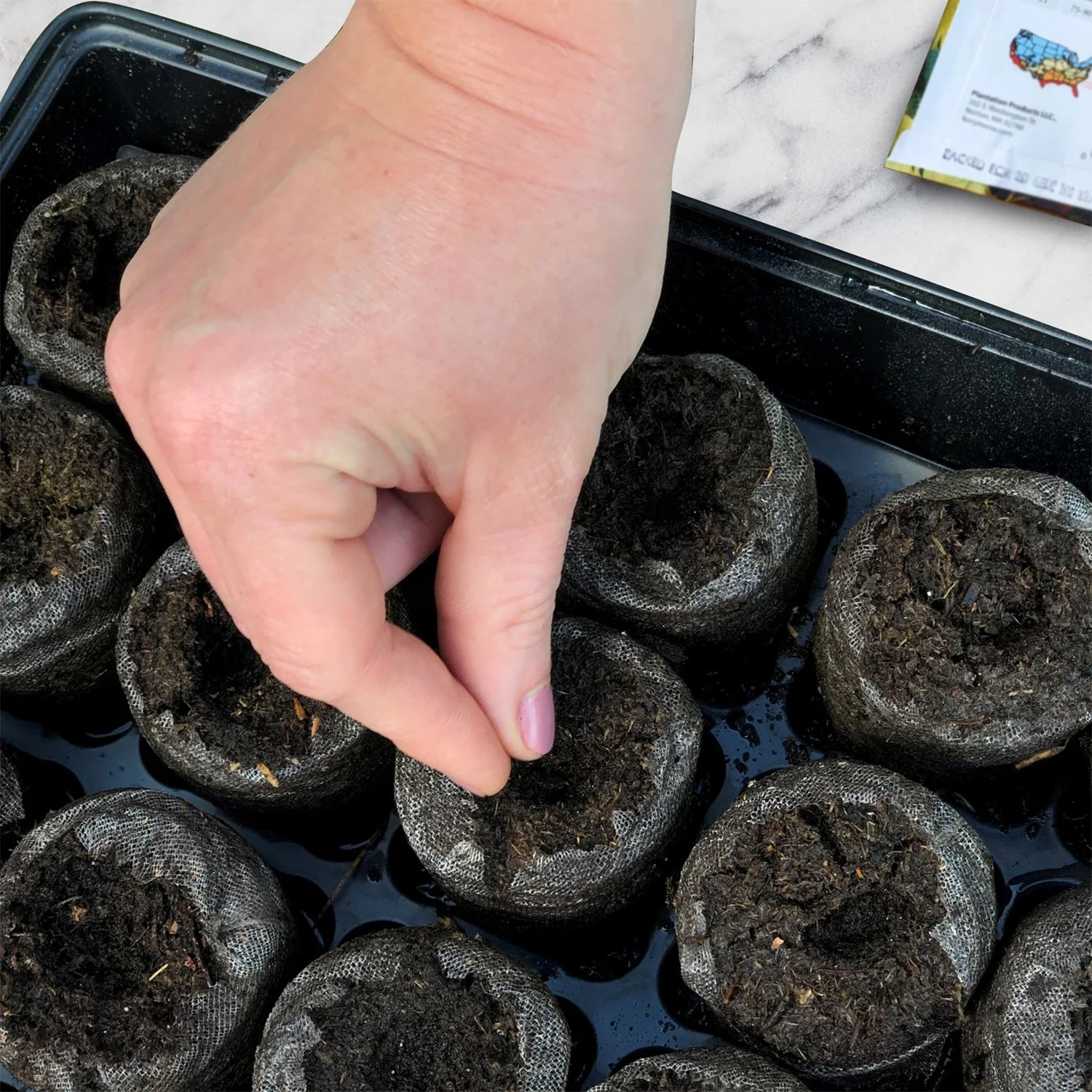30% off Seed Packets with code CYBER30 | View All Offers >
Kale, Dwarf Green Curled Seeds
Earn 3 points for this item with our
rewards program.

This variety of kale, known as Dwarf Green Curled, produces compact plants that are perfect for small gardens or containers.
Green Curled kale features decorative green curled leaves. The tasty leaves may be boiled as greens or chopped fresh for salads when young. Kale is superior to most vegetables in protein, vitamin, and mineral content. It's also a cool weather crop that is slow to bolt.
- SKU: 143736
- Common Name: Kale
- Botanical Name: Brassica oleracea
Safe
for Bees
Good For Pollinators
Grows
Best In:
Days to
Germination:
Water
Needs:
Days to
Maturity:
Best
Container Size:
- Plant Type: Vegetable
- Plant Lifecycle: Annual (plant every year)
- Fill Weight (grams): 1.5 g
- Approximate Seed Count: 400-425
- Characteristics: Attracts butterflies, moths, and pollinators | Slow to bolt
- Planting Method: Start Indoors
- Colour: Green
- Water Needs: Moist 5 cm (2 in.) per week
- Landscape Use: Edible Garden
- Tolerance: Light frosts of minus 3C (25F).
- Flavour: Sharp
- Preparation Ideas: Kale can be added to green salads or lightly sauteed in olive oil and garlic.
-
Growing Instructions:
- Planting Depth: 1.3 cm (1/2in.)
- Seed Spacing: Sow kale seeds roughly 1.3 cm (1/2 in.) apart in rows, keeping rows approximately 60 cm (24 in.) apart.
- Plant Spacing: 60 cm (24 in.)
- Instructions for Nutrient Care: Feed plants SUPERthrive once per week. Mix 1.2 ml (1/4 tsp) per 4L (1 gallon) of water in a watering can and apply solution to the base of the plants.
Kale is a cool season crop and seeds can be sown directly in the garden in early Spring as soon as the soil can be worked. Optimum soil temperature (not air temperature) should be 10-29°C (50-84°F) for seeds to germinate. Planting at a lower temperature will delay germination. Space seeds and plant to the depth indicated below. Press seeds into the soil to ensure good contact and cover with 1.3 cm (1/2 in.) of soil. After planting, water the seeds with a gentle mist or shower. It is critical to keep the soil consistently moist, but not soggy during germination. When your seedlings reach a height of a few centimetres (inches) and have developed 2 or 3 pairs of leaves, it is important to thin them out, according to the plant spacing indicated below. Do not allow the soil to become dry, as young plants have underdeveloped roots and can quickly dehydrate, particularly in windy conditions. Moist soil helps to keep kale leaves sweet and crisp, rather than tough and bitter.
For an earlier crop, kale seeds can be started indoors 6 to 8 weeks before the last frost in your area. Follow the seed depth and spacing guidelines indicated below. Once all danger of frost has passed, seedlings should be hardened off before planting in their growing location. Seedlings should be transplanted according to the plant and row spacing directions below. Regularly monitor your plants and ensure that the soil remains moist while they establish themselves in their new environment.
- Kale tastes best when plants mature before the heat of summer or after fall frosts occur. Hot temperatures slows down growth and cause a bitter flavor.
- If you are experiencing hot and drought-like conditions, provide plants with some shade, especially from the strong afternoon sun. Heat can make the leaves wilt and lose their flavor.
- Row covers can be used to protect plants from insect pests such as aphids and flea beetles.
- Kale is ready to harvest when the leaves are about the size of your hand. Pick several outer leaves per harvest, but no more than one-third of the plant at one time. Avoid picking the central bud (at the top center of the plant), which helps to maintain the plant’s productivity.





Kale, Dwarf Green Curled Seeds
Register to receive a notification when this item comes back in stock.
Thanks! We'll let you know when this item is back in stock.
You may also like

Join our rewards program today to start saving!

Free Shipping on orders over $35

There are a ton of ways to earn!








